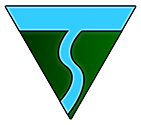Cleats are not created equal, if you are thinking about using cleats from other sports for football, read this first.
Football cleats are generally classified by both the height of the upper (High-top, mid-cut, low-top) and the material of the cleat (Molded rubber, molded plastic, detachable, turf)
Upper height will create the balance between ankle support and mobility. High-tops will provide the most ankle support and restrict movement the most, low-tops will have the least ankle support and will restrict mobility the least, mid-cut cleats will be somewhere in between. Although there are no strict rules about the upper height, it is often grouped with a position.
High tops – Offensive/Defensive Lineman
Mid-cut – Quarterbacks, Runningbacks, Fullbacks, Tight Ends, Linebackers
Low tops – Wide Receivers, Defensive backs
Cleat material will alter the weight, durability and traction of the cleat.
Molded rubber is the heaviest, most durable and cheapest option. Molded plastic is lighter, but usually wears away faster than rubber. Detachable cleats, are not sold as often as the other options as many youth leagues and high schools will not allow them. However, these are the most versatile, as you can change the cleats to reflect the playing field (different sizes, turf, metal tips). Turf cleats have small cleat spikes that are designed specifically for turf.
